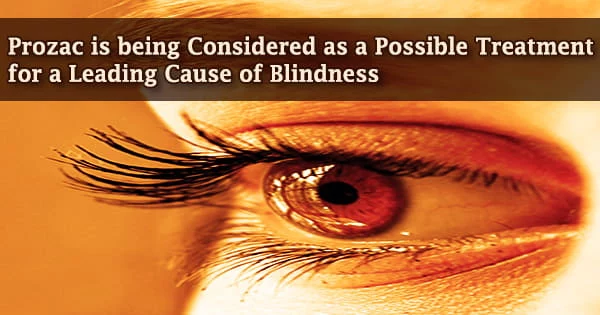According to recent research from the University of Virginia School of Medicine, an antidepressant known as Prozac might be the first therapy for the major cause of blindness in adults over 50.
Early data suggests that the medicine fluoxetine may be beneficial against atrophic (or “dry”) age-related macular degeneration, a disorder that affects roughly 200 million people worldwide, according to UVA’s Bradley D. Gelfand, Ph.D., and coworkers.
The medicine has shown promise in lab testing and animal models, and the researchers have backed up their findings by reviewing two massive insurance databases containing information on more than 100 million Americans. Patients using fluoxetine were less likely to develop atrophic macular degeneration (AMD), according to the findings.
The researchers are pushing clinical studies to evaluate the medication in people with AMD based on their findings. They believe the medicine might be given orally or through a long-term implant in the eye if it is successful.
“These findings are an exciting example of the promise of drug repurposing, using existing medicines in new and unexpected ways,” said Gelfand, of UVA’s Center for Advanced Vision Science. “Ultimately, the best way to test whether fluoxetine benefits macular degeneration is to run a prospective clinical trial.”
Fluoxetine and AMD
The researchers believe that fluoxetine helps against AMD by attaching to an immune system component called an inflammasome. The inflammasome NLRP3-ASC causes the pigmented layer of the retina to break down.
Gelfand and his team investigated fluoxetine and eight other depression medicines in lab mice after completing a significant bench study to assess what effect, if any, the antidepressants might have in a model of AMD. The investigators discovered that fluoxetine reduced the growth of the sickness, while the others did not.
Traditional approaches to drug development can be expensive and time-consuming: On average, a new FDA-approved drug takes 10-12 years and costs $2.8 billion (present-day dollars) to develop.
D. Gelfand
The researchers were so encouraged by their findings that they looked into fluoxetine use among patients over the age of 50 in two massive insurance databases. The researchers claim in a recent scientific publication that people who took the medicine had a “significantly” decreased risk of getting dry AMD.
They claim that by combining bench research with big data analysis, they might possibly speed up the repurposing of current medications for a variety of diseases, bringing novel therapies to patients faster.
“Traditional approaches to drug development can be expensive and time-consuming: On average, a new FDA-approved drug takes 10-12 years and costs $2.8 billion (present-day dollars) to develop,” the researchers wrote.
“Our identification of the unrecognized therapeutic activity of an existing FDA-approved drug-using big data mining, coupled with demonstrating its efficacy in a disease-relevant model, could greatly accelerate and reduce the cost of drug development.”
Earlier this year, Gelfand was engaged in a study that used a similar strategy to see if HIV medications are known as nucleoside reverse transcriptase inhibitors, or NRTIs, may also help with dry macular degeneration.
“While we have had a great deal of success with the approach of using real-world patient data, we may have only begun to scratch the surface of finding new uses for old drugs,” said Gelfand, of UVA’s departments of ophthalmology and biomedical engineering. “It is tempting to think about all the untapped therapeutic potential of medicines sitting on pharmacy shelves.”
Findings Published
The findings of the researchers were published in the scientific journal PNAS. Meenakshi Ambati, a senior at Albemarle High School who won multiple national and international scientific competition honors for her work, is the paper’s first author. She used bench laboratory methods as a volunteer in Gelfand’s lab at first.
She was able to continue working on computational analyses even when the pandemic nearly shut down typical laboratory activities, giving the whole research its multi-pronged approach.
The other members of the research team include Ivana Apicella, Shao-bin Wang, Siddharth Narendran, Hannah Leung, Felipe Pereira, Yosuke Nagasaka, Peirong Huang, Akhil Varshney, Kirstie L. Baker, Kenneth M. Marion, Mehrdad Shadmehr, Cliff I. Stains, Brian C. Werner, Srinivas R. Sadda, Ethan W. Taylor, S. Scott Sutton, and Joseph Magagnoli.
On patent applications on macular degeneration submitted by UVA, Gelfand and other researchers involved in the work are listed as inventors. DiceRx, a startup pharmaceutical firm, is also co-founded by Gelfand. The publication includes a complete list of the researchers’ disclosures.
















